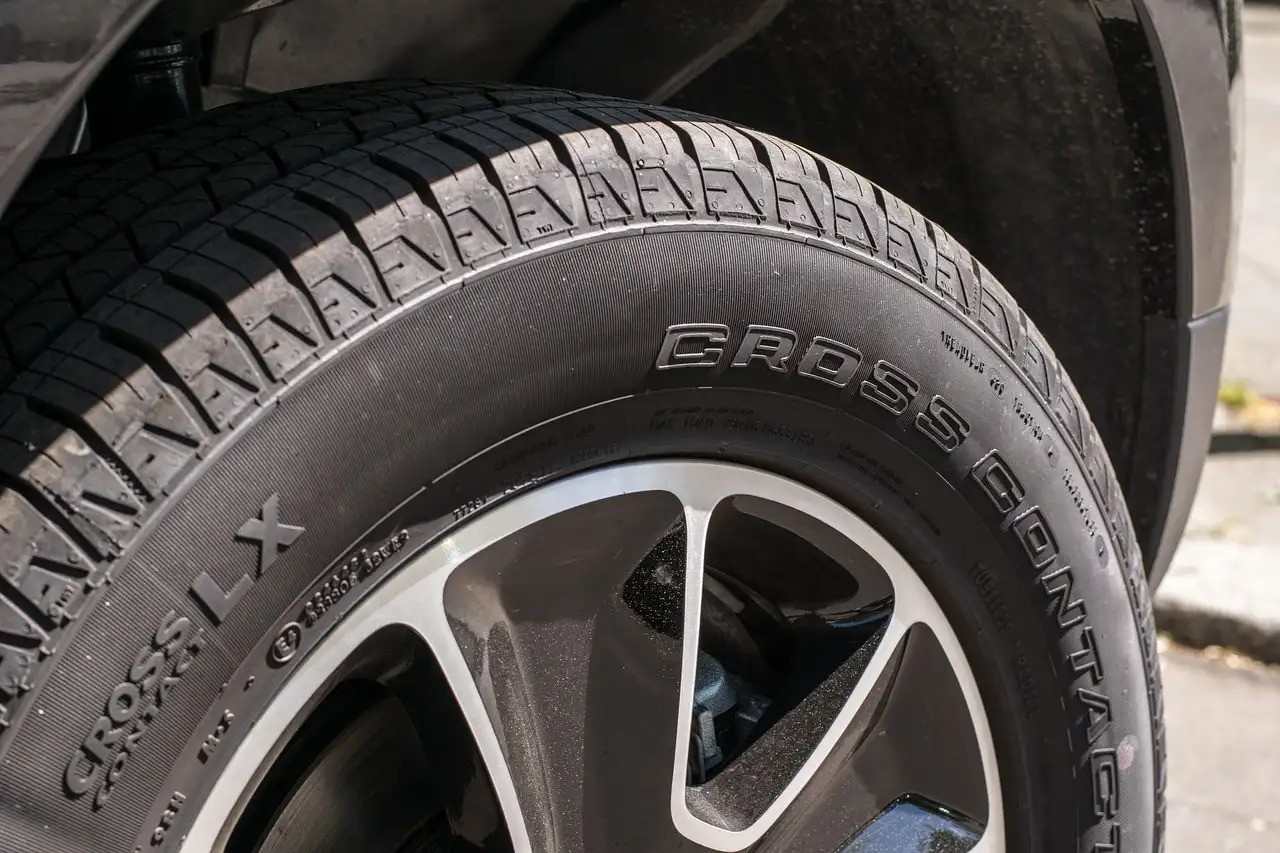What is Wheel Alignment?
Posted by The Tire Man on 2024 May 2nd
Introduction to Wheel Alignment
Wheel alignment is crucial for vehicle safety, efficiency, and tire longevity, yet it’s often overlooked. This process adjusts the wheels to the manufacturer's specifications, affecting handling and fuel consumption. Misaligned wheels, a common issue from daily driving challenges, can lead to uneven tire wear and compromised vehicle performance. In Canada’s diverse terrains, from Nova Scotia's coastal roads to Ontario’s urban streets, maintaining proper alignment is essential for all vehicles. Understanding the basics, including the angles of camber, caster, and toe, is the first step toward optimal driving conditions. Proper wheel alignment extends tire life, enhances safety, and ensures a smoother ride across Canada’s varied landscapes. In this blog, we will highlight the difference between all-season and all-weather tires.
The Fundamentals of Wheel Alignment
Understanding the basics of wheel alignment is crucial for vehicle owners. It involves adjusting the angles of your vehicle's wheels to the manufacturer's specifications, focusing on three key elements: camber, caster, and toe. Camber is the inward or outward tilt of the tire when viewed from the front of the vehicle. Caster is the angle of the steering pivot, affecting straight-line stability and cornering. Toe refers to the direction the tires point relative to one another when viewed from above. Properly aligned wheels ensure optimal contact with the road, leading to improved safety, tire longevity, and fuel efficiency. For Canadian drivers, understanding these terms means better handling and durability across diverse driving conditions.

How Do You Know if Your Wheels Need Alignment?
Identifying signs of poor wheel alignment early can save vehicle owners from costly repairs and unsafe driving conditions. The most conspicuous indicators include uneven or rapid tire wear, steering wheel misalignment when driving straight, vehicle pulling to one side, and a noticeable decrease in fuel efficiency. These symptoms not only affect the driving experience but also compromise safety. Uneven tire wear, for instance, diminishes the tire's grip on the road, especially hazardous in wet conditions prevalent in many parts of Canada. Similarly, a car that pulls to one side requires constant steering adjustments, increasing driver fatigue and risk of accidents. Recognizing these signs promptly and seeking professional alignment services ensures optimal vehicle performance, safety, and longevity of tires.

The Wheel Alignment Process
The wheel alignment process is a precise operation that requires professional equipment and expertise. It begins with a thorough inspection of the vehicle's suspension system to identify any potential issues that could affect alignment. Next, the vehicle is mounted on an alignment rack, where laser or infrared sensors measure the current alignment of the wheels in relation to the car's specifications. Adjustments are then made to the camber, caster, and toe settings to ensure the wheels are perfectly aligned. This process not only corrects any misalignment but also contributes to improved vehicle handling, enhanced safety, and increased efficiency. Regular alignment checks are recommended to maintain optimal performance, especially after encountering harsh driving conditions common in Canadian climates.

Types of Wheel Alignment
Wheel alignment can be categorized mainly into two types: front-end and four-wheel alignments.
Front-end alignment
Front-end alignment, as the name suggests, involves adjusting only the front wheels of the vehicle, ensuring they are parallel to the centerline of the car. This type is common for vehicles with a solid rear axle that does not require adjustment.
Four-Wheel Alignment
On the other hand, four-wheel alignment is recommended for all-wheel-drive models or vehicles with independent suspensions at both the front and rear. This comprehensive alignment adjusts the angles of all four wheels to ensure they are perpendicular to the ground and parallel to each other. Understanding which type of alignment your vehicle requires can significantly impact its handling, tire wear, and overall performance, especially in the diverse driving conditions found across Canada.
Wheel Alignment for Various Tire Categories
Proper wheel alignment is crucial for maximizing the performance and longevity of tires across different categories, including all-season, winter, summer, mud terrain, and trailer tires. Each tire type benefits from alignment in unique ways:
All-season Tires and All-Weather Tires: Alignment ensures even wear, extending the versatile usability of these tires throughout the year.
Winter Tires: Proper alignment is critical for maintaining traction in snowy and icy conditions, enhancing safety.
Summer Tires: Alignment optimizes the performance capabilities of these tires in warm, dry, and wet conditions.
Mud Terrain and Off-Road Tires: Correct alignment prevents rapid wear on rugged terrain, maintaining the tire’s aggressive tread pattern for better grip.
Trailer Tires: Ensures stability and safety for both the trailer and the towing vehicle, especially important for long hauls.
Alignment tailored to each tire type not only safeguards the investment in high-quality tires but also contributes to safer driving conditions. Regular alignment checks, especially after installing new tires or encountering severe driving conditions, help maintain tire health and vehicle performance.

DIY Wheel Alignment: Pros and Cons
Attempting a DIY wheel alignment can be tempting for the hands-on vehicle owner, but it's essential to weigh the pros and cons before proceeding.
The Pros of DIY Wheel Alignment
Cost Savings: Performing wheel alignment at home can save money on professional services.
Learning Experience: It offers an opportunity to better understand your vehicle's mechanics.
The Cons of DIY Wheel Alignment
Precision: Professional alignment utilizes advanced equipment for accuracy that DIY methods can't match.
Risk of Damage: Incorrect adjustments can lead to more significant issues, potentially costing more in long-term repairs.
Safety Concerns: Improper alignment can compromise vehicle safety, affecting handling and tire wear.
While a DIY approach may seem cost-effective, the importance of precise adjustments made by professional equipment cannot be overstated. For vehicles driving through Canada's
varied landscapes, where road conditions can rapidly change, ensuring your wheel alignment is accurately set by professionals is crucial for safety and performance.
The Importance of Regular Wheel Alignment Checks
Regular wheel alignment checks are a cornerstone of vehicle maintenance, crucial for ensuring optimal performance, safety, and tire longevity. These checks are particularly vital for Canadian drivers, who face a gamut of driving conditions, from icy roads in winter to uneven rural trails in summer. Alignment issues can arise from everyday occurrences such as hitting a pothole, curb, or normal wear and tear over time.
Benefits of Regular Checks
Enhanced Safety: Proper alignment ensures better handling and vehicle stability.
Increased Tire Life: Alignment prevents uneven tire wear, extending tire life.
Fuel Efficiency: Aligned wheels reduce rolling resistance, improving fuel economy.
Cost Savings: Prevents more significant, costly repairs down the line by addressing issues early. Experts recommend having your wheel alignment checked annually or whenever new tires are installed, after a significant impact, or if you notice signs of misalignment. This proactive approach ensures your vehicle remains in top condition, ready to tackle the demands of Canadian driving with confidence.

Conclusion: The Role of Wheel Alignment in Vehicle Maintenance
Correct wheel alignment is essential for the safety, performance, and efficiency of your vehicle. It extends tire life, enhances fuel economy, and ensures your car handles reliably, especially on Canada’s diverse roads. Emphasizing regular checks can prevent costly repairs and maintain your vehicle in top condition.
For those seeking to optimize their vehicle's performance further, we offer high-quality wheels and rims at unbeatable prices. Ensuring your vehicle is equipped with the best, perfectly aligned to your needs, begins with choosing the right partner. Alternatively, contact us for affordable, top-brand tires and wheels, and keep your vehicle running smoothly on every journey.




